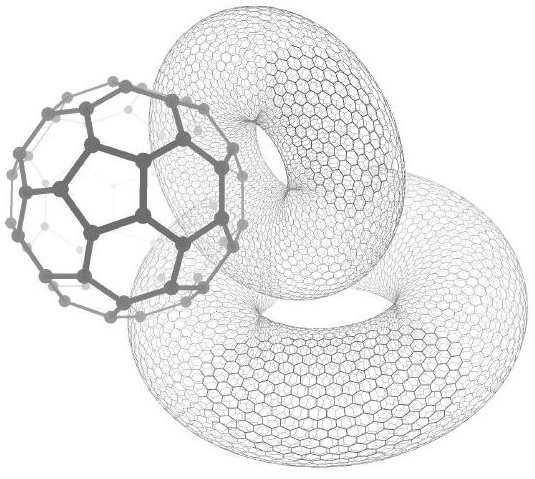 Multiprocessor software
Multiprocessor software
and information complex simulations
of molecular systems for supercomputers «KVAZAR»
«KVAZAR» is an open multiprocessor software complex of molecular modeling, which combines the advantages of the most successful modern molecular modeling package (support for high-performance computing, cross-platform graphical user interface, a large variety of theoretical methods and approaches), but at the same time having a flexible, easily modifiable architecture.
Possibilities software package
Program complex «KVAZAR» contains a wide set of tools allows researchers to solve the specific scientific problem at all its stages: a design of geometry of the objects; the task of periodic boundary conditions and external conditions; the numerical experiments using a variety of mathematical models; preservation and visualization of the results. These tools focus on complex multiprocessor systems, and work on a personal computer.
Developing complex of molecular modeling is used to solve a wide class of problems in biophysics, medicine and nanoelectronics:
- The calculation of emission, electron energy and strength characterizes of carbon nanostructures, including the defect-free single-walled and multi-walled nanotubes, graphene and its modifications, the nanotube of complex shape, fullerenes, composite materials, in order to create models of the improved versions of electronic nanodevices on their basis;
- The calculation of the electrical conductivity and the thermal conductivity of nanostructures and biosystems to create the high sensitivity sensor devices on their basis;
- The modeling of physical and chemical processes in the intima of arteries at the atomic and molecular-cellular level to identify the mechanism of the lipoproteins penetration in interendothelial space;
- The modeling of the transport of organic and inorganic molecules on graphene in order to identify the most effective approach to manage their movement;
- The simulation of interaction between carbon nanostructures and chitosan chains to develop new prosthetic bionanocomposite material on their basis;
- The modeling of the self-assembly processes for biological macromolecules in order to develop the modern technologies to produce of bionanomaterials.
This complex implemented the classical approaches of molecular modeling, the original mathematical models and new versions of existing methods of mathematical modeling to solve the above problems:
- the original molecular mechanical (MM) model [1];
- the modified molecular mechanical method based on the Brenner potential [2];
- the original algorithm of molecular dynamics, including the calculation of the surface energy of a molecular system by means of the molecular mechanical method and calculation of quantum forces by using the matrix perturbation theory developed by J. H. Wilkinson [3];
- the adapted quantum-chemical tight binding method for the study of electronic and mechanical properties of carbon nanostructures, as well as their behavior in an electric field [4-6];
- the original method of calculating the local stresses based on the quantum model of graphene nanoribbons and finite-empirical approach to the calculation of the energy of a single atom [7];
- the modified model of the hybrid MM/QM method (molecular mechanics/quantum mechanics) with an original approach to identify the active and buffer areas in the study of molecular-atomic system [8];
- the modified self-consistent charge density functional tight binding (SCC-DFTB) method [9] of the original scheme for constructing the Hamiltonian;
- the coarse model using MARTINI force field [10].
- the classical molecular mechanical method using the potential AMBER [11].
The developed software system is focused on the use of the hybrid parallel architecture that combines different technologies of parallel programming (MPI, OpenMP, CUDA) and various types of calculators (CPU and GPU), which allows several times to reduce the simulation of physical and chemical processes at the atomic and molecular level.
- O.E. Glukhova, A.S. Kolesnikova and I.V. Kirillova Investigation of the Effect of Bending on the Polymerization of Fullerenes Inside Carbon Nanotubes // Fullerenes, Nanotubes and Carbon Nanostructures 2012, 20:4-7, 391-394.
- O.E. Glukhova, A.S. Kolesnikova Empirical Modelling of Longitudinal Tension and Compression of Graphene Nanoparticles and Nanoribbons // Physics of the Solid State. 2011. Vol. 53. No.9 P. 1957-1962.
- O.E. Glukhova, G.V. Savostyanov, M.M. Slepchenkov A New Approach to Dynamical Determination of the Active Zone in the Framework of the Hybrid Model (Quantum Mechanics/ Molecular Mechanics) // Procedia Materials Science 2014, Vol. 6, P. 256–264.
- O.E. Glukhova, A.S. Kolesnikova Emission Properties of Potassium-Doped Bamboo-Like Nanotubes // Journal of Nano and Microsystem Technique. – 2013. – № 5. – P. 2-5.
- O.E. Glukhova and A.I. Zhbanov Equilibrium state of C60, C70, and C72 nanoclusters and local defects of the molecular skeleton // Physics of Solid State. 2003. V.ol. 45. P. 189-196. DOI: 10.1134/1.1537434.
- O.E. Glukhova Thin carbon nanotubes in a homogeneous electrostatic field // Journal of Nano and Microsystem Technique. – 2008. – Vol. 7. – P. 8-12.
- O. Glukhova and M. Slepchenkov Influence of the curvature of deformed graphene nanoribbons on their electronic and adsorptive properties: theoretical investigation based on the analysis of the local stress field for an atomic grid // Nanoscale 2012. Issue 11. Pages 3335-3344. DOI: 10.1039/C2NR30477E.
- Glukhova O.E., Savostyanov G.V., Slepchenkov M.M. A New Approach to Dynamical Determination of the Active Zone in the Framework of the Hybrid Model (Quantum Mechanics/ Molecular Mechanics) // Procedia Materials Science 2014, Vol. 6, P. 256–264.
- Elstner M., Porezag D., Jungnickel G., Elsner J., Haugk M., Frauenheim Th., Suhai S., and Seifert G. Self-consistent-charge density-functional tight-binding method for simulations of complex materials properties // Phys. Rev. B 1998, Vol. 58, Num. 7260.
- Marrink S.J., Risselada H.J., Yefimov S., Tieleman D.P., de Vries A.H. The MARTINI Force Field: Coarse Grained Model for Biomolecular Simulations // Phys. Chem. B. 2007. Vol. 111. P. 7812– 7824.
- Schmidt M.W., Baldridge K.K., Boatz J.A., Elbert S.T., Gordon M.S., Jensen J.H., Koseki S., Matsunaga N., Nguyen K.A., Su S., Windus T.L., Dupuis M. and Montgomery J.A. General Atomic and Molecular Electronic Structure System // J. Comput. Chem. 1993. Vol. 14. P. 1347–1363.







